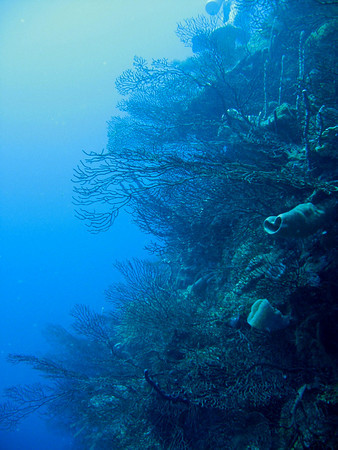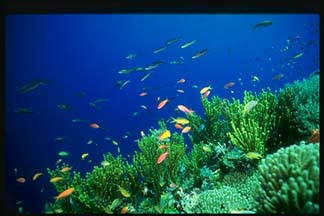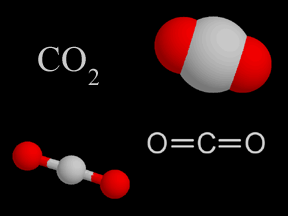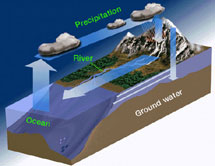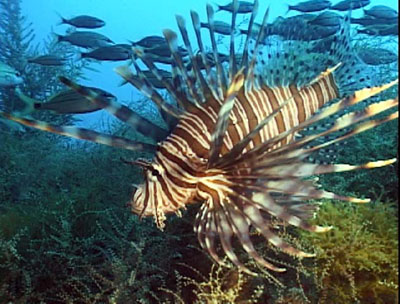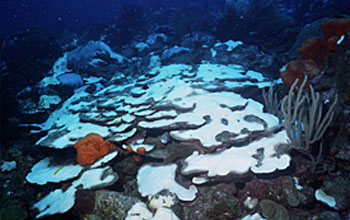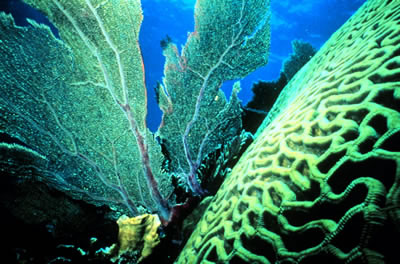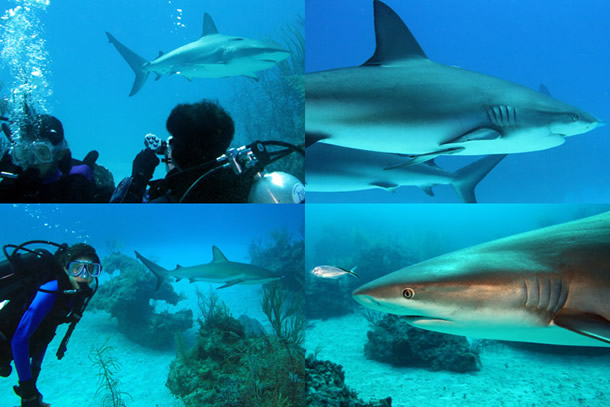Click on image for full size
Courtesy of Anne Pharamond
Coral Reefs on a Changing Planet
A coral reef is like an underwater city. Corals and algae construct the framework that rises off the tropical ocean floor and attract many diverse inhabitants. Schools of multicolored fish glide above the coral structure. Invertebrates dart around on this coral city. All that busy activity and life exists in a delicate balance.
This delicate balance is threatened by humans in many ways. Some of the threats are easy to see - plastic bottles and other trash littering reefs, sediment in the water or settling on the reef corals, and water pollution. Overfishing is reducing the number of grazing fish in some areas. And scratches on corals from the fins of careless snorkelers, anchors, or even deep gouges from boats that have run aground are visible in many reefs.
There are also threats that are less visible yet pose great dangers to coral reefs like acidic seawater, warmer seawater, and coral diseases. The threats might be hard to see, but their effects are not. Some reefs have been so hard hit that scientists say they will not be able to recover. Scientists predict that over half of the world’s coral reefs may die by 2050 if these threats continue.
Acid Seawater: Increasing amounts of carbon dioxide are released into the atmosphere from burning of fossil fuels. Some of that carbon dioxide makes its way into the world’s oceans. This changes the chemistry of seawater, lowering its pH, making it more acidic, which could have a large impact on marine life in the future.
Marine creatures such as corals, clams, snails, and many types of algae and plankton build their skeletons and shells from calcium carbonate. These creatures get the chemical building blocks they need to form the calcium carbonate mineral of their skeletons from seawater. As seawater gets more acidic with more carbon dioxide dissolved in it, these creatures might have a harder time making their skeletons and shells.
Warmer Seawater: As the Earth warms, so do its oceans. Surface water temperatures obviously change from season to season and year to year, but the whole ocean has warmed about 0.1 degree Fahrenheit (0.55 degree Celsius) in the past 30-50 years. This may not seem like much of a temperature change, but it is quite significant. When seawater gets too warm, coral animals loose the algae that live within their little bodies, a process called coral bleaching. Without the algae, corals have less nutrition. Unless cooler temperatures return, allowing algae to return, the coral dies. So as water temperature climbs, corals become less healthy. Some reefs might be protected if there are areas of the ocean that are able to stay cool.
Coral Diseases: These diseases are caused by bacteria, fungi, and viruses. There are more diseased corals today than there were several decades ago. These diseases do occur naturally, but are also brought on by pollution (like waste water and sewage flushed down the drain and toilet) and other changes to the environment.
Coral disease can be the cause of mortality in coral, especially if the coral has been first weakened by bleaching. Though, coral disease has also happened without any bleaching being recorded first. Scientists are researching and debating the connection between global warming and disease; it is a complex picture, but one that seems to be gaining traction among scientists. Professor Drew Harvell, a professor of ecology and evolutionary biology at Cornell University and chair of the Coral Reef Targeted Research Program's Coral Disease Working Group said, "Associations between warming and infectious disease in corals are getting more established now. That Eastern Caribbean outbreak (2005) was massive, the biggest to occur in the region that we know of. My concern is that it's also a harbinger of things to come."
No one would argue with the idea that limiting greenhouse gases is good for coral reefs; limiting them would make the oceans less acidic and cooler in the long run which are both good for coral reef development and health. Humans should also curb known stressors to coral like contaminating pollutants, sewage, and sediment runoff that happens around development projects.


